Passport and Visas
Travel and Identity Documents for Europe
What is a passport, why do you need one, and how do you get it?
Passport stamps are becoming a legend of the last century, though it is still possible to get your blue book inked in some airports. This shows page 8 of my passport on the left with an entry stamp to the UK, a.k.a. Britain or England, and a return entry stamp courtesy of the USA Department of Homeland Security. Page 9 on the right shows entry and exit stamps at Amsterdam's Schiphol Airport in Nederland. Notice the shape of the frame and the orientation of the arrows. The international code for Nederland is NL and can be found in the circle of 11 stars in the upper left of the stamp. Dates on the European stamps are in European format. See chapter 28 European Dates and Time: Traveling in a Distant Time Zone.
The UK entry stamp states that I have permission to stay for six months. The Dutch stamp makes no mention of the Schengen Zone or the fact that there is a limit of 90 days, in the totality of the Schengen Zone. Nederland and most of continental Europe are members of the Schengen Zone. See further information on Schengen below.
Carpe diem. Vivere bene! Gratia Deo.
Chapter 3
HOW TO EUROPE:
The Complete Travelers Handbook
John Bermont
This entire book is published totally free on-line by the author and photographer, yours truly, with help from my daughter Stephanie. Yes, you can copy — if you ask first. Please read my copyright and permissions statements. Visit my home page at enjoy-europe for truck loads of more helpful illustrated travel information sans pareil. If you have questions or comments after reading this chapter please see NOTE TO READERS. Updated 2 November 2015.
Advance to Go.
THE PASSPORT
What Is It?
The passport is a pretty little blue book, the opening paragraph of which reads:
"The Secretary of State of the United States of America hereby requests all whom it may concern to permit the citizen/national of the United States named herein to pass without delay or hindrance and in case of need to give all lawful aid and protection."
This entreaty is written in English, français, and Español.
The book is about 3" by 5" by 1/8" (9 cm by 13 cm by 3 mm) with a flex cover.
It has 28 pages. It fits easily into a shirt pocket.
Page 2 has your photo and your vital statistics.
Page 3 is for your signature. Sign this with a black ball-point pen.
Page 4 is for your address and emergency contact information. Fill this out in pencil so you can
change it if need be.
Pages 5, 6, and 7 have "Important Information," essential for successful
trouble free foreign travel — read it, please.
Pages 8 - 27 are blank except for headers and anti-forgery illustrations.
The blank pages are for visas, entry stamps, and exit stamps issued by by the USA and foreign
governments. The customs agents of some countries also make notations in these
pages regarding money and valuables you are carrying with you.
Page 28 says:
This document contains sensitive electronics. For best performance, do not bend, perforate, or expose to extreme temperatures.
Page 28 also has important information and contact URLs regarding importation of goods and services, Customs and border protection, agriculture, U.S. Taxes, and Social Security.
I'm sure that you are too busy to read all that. But you have about 10 hours of do nothing time flying over to Europe. Amuse yourself and thumb through this stuff. They put it there in your passport for a reason.
Why Do You Need a Passport?
A passport is the only official internationally recognized identification document. Forget your driver's license, birth certificate, school I.D., and library card. You do not need them. You do need a valid United States passport to enter Europe and to come home. Consequently, no airline will accept you on board if you don't have your little blue book in hand. Each individual must have a passport. That includes your day old baby.
How To Get a Passport
To allow time for the mails and processing of your form, get going on getting your passport no less than eight weeks before you plan to depart. In fact, do it now if you don't already have a passport.
You can go to the official U.S. Department of State website and follow the directions. The link is Passports. Or you can go to your local post office and pick up the forms and instructions.
The passport is valid for 10 years, in most cases. Currently, November 2015, the cost is $110.00 for the application fee if you are 16 or older. If you are under 16 the fee is $80.00. But there is also a $25.00 execution fee. The web site does not explain the difference beteen an application fee and an execution fee. Sounds like government obfuscation. Why don't they just call it a tax?
Though the normal time for getting a passport is measured in weeks, expedited service is available. I once had to get a renewed passport for an unexpected trip on short notice. I applied in person at the Passport Agency in Los Angeles with my tickets in hand to prove my need for speed. My new passport was ready the next afternoon.
That is the general information. Check out the government web site for the devil's details. There are too many options to put it all here, and they keep changing things. The main detail is that you must submit proof that you are a citizen of the USA. Required documentation is given at I am a US Citizen.
Is Yours Still Valid?
This advice might seem rather rudimentary, but if you already have a passport, check to see that it won't expire while you are traveling or living over there. Some countries require that your passport be valid for three months or six months from your date of arrival on their piece of the earth.
One intelligent friend of mine recently had an interesting experience at the Seattle airport. With her ticket and passport in hand she checked in to fly over to Amsterdam. Excuse me, but her passport had expired a few months earlier. The airline would not let her on board. She had it fixed the next day and then went on her way.
Children
It used to be that children could be included on a parent's passport, but no more. Everybody needs an individual passport, even infants.
Passport Stamps
Typically your passport is stamped as you arrive by air in your first country in Europe. It is also stamped as you re-enter the USA. Hummm, I flew to Paris a few years ago and out again. The French police did not stamp my passport. That got me looking for my USA exit and entry stamps. There is only one entry stamp and no exit stamps out of three round trips with this passport. It seems like everything is done in the computers now. What is the point of having a passport?
On my return through Detroit in September 2015 there was a touch screen for my Customs declaration. See chapter 25 Customs Duty, USA and Europe for information on that important requirement.
The machine also had a camera. I was directed to face it and frame my face n the little box on screen. Snap. Then it used facial recognition technology to compare the photo with my passport mug shot. It was good and I was allowed through. Being as how my passport photo page is sealed under a plastic film with at least two holograms and who knows what other features this looks like a pretty secure identification system. I guess the day is coming when passports look like drivers licenses and fit in your wallet. Oops, it's already here. See the Passport Cards section below.
In Europe, police at ground border crossings usually don't stamp passports these days. In fact, with the inauguration of the European Union, all of the passport control points on common borders of the members (which is most of Europe) have been eliminated.
Even before this, we would often drive through some borders without stopping. As far back as 1976 I drove over the Belgium Netherlands border at 100 mph. I can't even recall seeing the border sign post of Luxembourg though I have driven through that country a number of times.
On the other hand, police in eastern European countries normally take a long look at your photo and make their mark in your book.
Switzerland maintains strict passport control at all border crossings. Swiss police also have road side check points within the country where you will be required to show your car papers and passport, and answer the question "What are you doing in Switzerland?" Heck, I just came over to taste the chocolate.
On entering most other countries in Europe the police will wave you in as soon as they see the cover of your blue book. You won't even be able to get it out of your pocket before they look at the next customer.
There are exceptions. Elizabeth and I spent six hours parked at the border trying to get out of Bulgaria and into Romania, listening to excuses why we couldn't leave. We finally returned back into Bulgaria for another night when it became too late. The next day we went back to the border and they started the same rigmarole. Elizabeth got mad and walked up to the Bulgarian border guard with a statement: "We're Americans and we want to get out of your country, NOW!" He let us pass immediately and within an hour we had our visa to travel about in Romania. Some Moldavian travelers at this border crossing told us that the way to get across borders in eastern Europe is to put a small bottle of cheap perfume on your steering column, making it convenient for the guard to reach in and collect his "toll." I was told when I lived in Holland that a package of Kent cigarettes was acceptable.
Passport Card
The USA has begun issuing Passport Cards. These are valid for land and seaport border crossings to and from Mexico, Canada, and the Caribbean. The Passport Card is not valid for international air travel.
Some states are issuing "enhanced driver's licenses" which can substitute for a Passport Card. This official photo I.D. is probably more common in border states like Michigan where I live. Obtaining an enhanced driver's license requires proof of citizenship and residence of course. Check with your state DMV or SoS office. But again, this is not valid for international air travel. It is required if you want to vote in Michigan and do not have a driver's license. We don't want you people from Chicago coming up here and voting.
Passport Security
Your passport is the property of the United States government. You are simply the "bearer." Your passport is an extremely important and valuable piece, the I.D. recognized by everyone, everywhere.
If you lose your passport or if it is stolen your travels will hit a very sour note. The finder or thief will have scored big with a readily marketable item, the envy of many people, good and not so. Guard it closely and report its disappearance immediately to the local police and to the nearest US embassy. You will then have to detour to the embassy to get a replacement. There goes a day or a few, a big extra cash expense, maybe missed plane connections, and probably temporary starvation since your money, traveler's checks, and credit cards were in the same wallet or purse. With no passport you are a nobody, nada, zilch.
See the section "Avoiding Jesse James" in chapter 8, Pickpockets in Europe: They're Everywhere for detailed and firsthand descriptions of the modi operandi of pickpockets and baggage thieves, and how to defend yourself against calamity. It may be the most important thing you will learn on this web site.
If your passport winds up missing try to remember where you used it last. Did you leave it at a hotel desk, airline check-in counter, or did you use it for I.D. when cashing a traveler's check, using a credit card, or picking up mail? Several times waiters have "forgotten" to return my passport after having demanded it as I.D. when I used a credit card to pay for dinner. Incidentally, do not keep money, your airline ticket, or other valuable papers in your passport.
Travelers are about evenly split on the question of carrying their passport with them or leaving it in the hotel safe. Then there are some people who leave it in their suitcase. That is dumb. I carry mine at all times. It is my I.D. and I never know when I am going to need it. In some countries, e.g. The Netherlands, you must have it on your person at all times. I recently read a first-hand account of a traveler in Switzerland who was fined $3,000 for not having his passport in his possession. It was back at his hotel. I wear an undershirt with a breast pocket and that is my passport home base. I also keep an extra credit card and my big cash, i.e. €100 bank notes, in that pocket. A breast pocket would not work too well for women but a money belt around the waist or on a cord around the neck, under your blouse, would be perfect. Keep the pocket of the money belt in the front. Wear loose outer garments so it doesn't show through. The message is — keep your passport concealed and keep it close to your body.
RFID
New USA passports contain a chip called a Radio Frequency Identification tag. This is abbreviated to RFID tag. This chip makes it easier for passport police to read and record the goings and comings of your passport. The RFID reader can be yards away from your passport and you never know that it is being scrutinized. That is nice for passport police, but not necessarily good for you. Bad guys can get their hands on the hardware and software and pirate your confidential data.
To prevent this you can buy a special wallet which blocks the RFID device. These wallets include a thin piece of aluminum which intercepts the radio waves. Leave your passport in the wallet until you greet the passport officer.
Credit card companies are starting to adopt this technology so your personal security is going to have a new hole in it. As if identity theft was not already a huge problem, here they go and make it worse. Criminals do not need to be very smart to be smarter than so-called security experts.
Hotels
The local police need to be notified of every visitor in town. Hotel, hostel, and B&B keepers request your passport on check-in and file a report with the local police. Most hotels will copy your passport or write down the vital information and return it immediately. Lazy ones will sometimes keep it half a day or overnight. Be sure to retrieve it as soon as possible. I have seen mine laid nonchalantly on the counter or in a message pigeonhole within easy reach of passers-by.
In eastern Europe the hotel may insist on keeping your passport until you pay. I pay in advance just to keep my mitts on my passport. Remember that while your hotel keeper holds your passport you may be prevented from using a credit card or entering a casino. Worse yet, you will be a nobody if you get run over while crossing a street. What are the police going to do with your body if there is no identification on it? Think of YOUR passport as the last ticket on the last plane from Casablanca, and keep it in YOUR pocket.
Aliases
The passport usually has other names in Europe. Be alert for the words pahs, pahz, paspoort, passaporte, pass, passporto, and similar sounds.
Copy It
Make a few copies of the first page of your passport, the page with your mug shot and passport number on it. Have the copies laminated, or do it yourself with a couple passes of wide clear package wrapping tape. Keep one laminated copy in your handkerchief pocket, one in your toilet kit, and leave the other with a friend or relative back home.
By the way, I read a notice on a copy machine in a library that it is illegal to copy passports. Boooosh! Where does krap misinformation like this come from? My passport specifically advises me to make two copies to facilitate replacement if it is lost or stolen.
VISA
What Is a Visa?
A visa is an official authorization for a traveler to enter a foreign country. It is issued by the foreign government after you fill out their application form. A nominal fee is usually required. Sometimes the fee is significantly more than nominal.
Visas are entered in your passport by some countries, and are a separate document for other countries. The USA does not give you visas to visit other countries. It is your responsibility to find out if the country you are planning to visit requires you to have a visa. If so, it is your responsibility to apply to that country's embassy for the visa. Uncle Sam will not hold your hand.
Generally Not Needed
Americans do not need a visa to enter most of the countries of Europe, even most of the former communist countries. Stays of up to 90 days are generally allowed without a visa, with a wrinkle for the Schengen contries. See below. And when you do need a visa it's usually not too difficult to get it.
I drove up to the Ukraine border from Poland, bought a visa ($50 for 48 hours), and was speeding east into the former "Evil Empire" within 15 minutes. That was back in 1992, less than three years after the fall of the wall and the implosion of the communist Soviet Union. Good riddance to you murdering bastards. Visas are no longer required for entry to Ukraine for stays up to 90 days, and Americans are given a hearty welcome. That same year I applied for my visa to the Baltic countries (Lithuania, Estonia, and Latvia) in Berlin and had it within a couple of hours. Before the Fall of the Wall, we applied for visas to enter Hungary at the Hungarian consulate in Paris and received them within 24 hours. The same year the French had a mighty cow over the USA about something or another and were requiring Americans to visa up before entering France. I have one of those souvenir visas. Turkey did the same thing in retaliation for a similarly imprudent impudence by the US government, and then hiked the fee to the same exorbitant amount charged to Turks for a visa to the USA. It's just time and money.
When Required
That is mostly all history. As of March 2011 the only European countries requiring Americans to have a tourist visa are Turkey, Russia, and Belarus. The requirement for Belarus is particularly annoying because it restricts travel between Lithuania and Poland to a narrow strip of land pinched in between Russia and Belarus. A single transit visa for Belarus costs $100!
Russia remains a very difficult place for foreign travelers. Not only an expensive visa but an itinerary approved by Mother Russia is required. These stupid regulations born out of self inflicted paranoia just keep many of us out of the country. There are plenty of other countries welcoming us without those overbearing and outrageously expensive rules.
Schengen Visa
In the good old days of visa free 90 day travel the 90 days applied to an individual country. On the 89th day you could hop across the border, get an entry stamp in the country next door, and then go back for another 89 days. This procedure is not nearly so convenient since the invention of the Schengen visa.
The Schengen Agreement of 1985 was inaugurated between the Netherlands, Belgium, Luxembourg, Germany, and France as a framework to make it easier for free movement of people and goods across their respective borders. In 1990 this became more concrete with another agreement on establishing a Schengen visa for foreigners wishing to travel in these countries. One visa could serve for all five countries. This made it much easier for travelers to move about.
This sounds good for many travelers, but there is a drawback for Americans. Now the 90 days applies to all the members of the Schengen Zone for a six month period. Thus you cannot stay more than 90 days in the Schengen Zone before you must take a 90 day exit from the Schengen Zone.
The Schengen Zone keeps growing. It now includes 25 countries. The notable exceptions are Britain, Ireland, Romania, Bulgaria, Turkey, Cyprus, and most of the Balkan countries. Maybe you can take a three month layover in Bulgaria or Turkey, and enjoy great food and super economy rates. In 2009 my UK entry stamp at London's Heathrow Airport gave me "leave to enter for six months: employment and recourse to public funds prohibited."
The Schengen Zone is sort of fuzzy. A few countries are half in and half out. Even the official European Union web site page for Schengen does not have a complete list. Further, when you arrive in Europe you normally get an entry stamp for the country you first arrive in. There is no mention of Schengen or of the 90 day rule in the entry stamp verbiage. For limited information on Schengen members see the Prime Travel Data section on this site.
If you plan a long visit to one country it would probably be easy to stay under radar on this 90 days regulation. Entry and exit stamps are usually not put in passports anymore, except at your European entry airport, so it would be difficult for Authority to enforce the regulation. Besides, the police are not out on the streets checking identity papers. I've gone over the 90 day limit in Holland and France without a problem, so far, despite the fact that I normally ask for entry and exit stamps when I fly in and out. On my last visit to Paris, flying in/out from/to Detroit, I was given neither an entry nor an exit stamp at Paris CDG airport. I didn't notice these omissions until several months later.
The penalty for violating the 90 day Schengen rule is not provided by the Schengen web page. There is some anecdotal information on various web sites regarding the fine, from nominal to $500, possible imprisonment followed by expulsion, plus subsequent exclusion from entering the Schengen Zone again, from 180 days to a year. Anecdotal information also indicates enforcement varies from strict to lax depending on the country.
Invalid Visa
If you have a visa and it has expired, well, just don't go. One of the most startling things seen in my travels occurred when a business associate and I arrived in Kiev at the invitation of an official Ukraine government bureau. My partner's visa had been issued when we were first informed of the trip, but then the visit had been delayed a month. We landed the day after his visa expired. On arrival, he was escorted upstairs in the terminal building amongst expressions of nyet problemsky (no problem). But an hour later he was brought back into the terminal by a couple of big guys, one on each arm. They marched him straight back to the plane on which we had just arrived. The lesson, don't even think of violating the exit date. Border police are about the most hard-case people you are going to meet in Europe or anywhere. My partner had his visa renewed within a day at the Soviet embassy in Vienna, but that was an expensive affair. So, no visa, no go.
Residence Visa
If you plan to spend a year or so in one country you do need to obtain a visa and explain why you are lolling about over there. I've obtained residence visas twice for purposes of working in Europe. These were obtained at my employers' request and with their cash, patience, and time for the paperwork. These visas must be renewed annually. For more information on the formalities of living in Europe see chapter 22, Living in Europe: Travel to the Max as an Expatriate.
If you are being transferred to work in a foreign country, the company you are working for will most certainly go through the exertions of facilitating the visa process for you, and will also be required to obtain a work permit for you from the foreign government. That's another story. See chapter 21, Working in Europe: Get Paid to Travel.
Generally you can apply for a resident visa in the USA or in the foreign country when you get there. In both of my cases I did it over there.
To do it from home contact a consulate or the embassy of the country of your choice. Each country has an embassy in Washington, DC, and many countries maintain consulates in major American cities. Look in your phone book yellow pages under the heading "Consulates and Other Foreign Government Representatives." If there is no listing for the country you are interested in, contact their embassy in Washington. Links to offices of many foreign consulates are provided in the Prime Travel Data section of www.enjoy-europe.com.
Obtaining a resident visa may take a week or more, plus post office delays. It is possible to expedite the process by presenting yourself at the proper office or by paying a specialized visa service to do the legwork for you. Ask your travel agent. If you are going to more than one country which requires a visa, you can only apply for them one at a time since you must send in your passport with your visa application.
FURTHER REGULATIONS
No Freeloaders
When entering some countries, you will be asked to explain why you are there, where you are staying, and how long you will be hanging around. Furthermore, you may be required to show your return ticket and tell the border police how much money you have. The reason for these questions is to make sure you don't settle down and start living off the local taxpayers. If you do not satisfy the requirements, you can be escorted onto the next plane or train out of the country. There is no amnesty.
When communism still ruled in the east we saw a group of Russians taken off the train as we entered Yugoslavia from Hungary. Yugoslavia at the time had a requirement that all visitors must have at least $200 in United States currency with them. These Russians were carrying rubles to pay for their vacation, but the Yugoslavs did not care much for rubles, or Russians either for that matter. The Hungarian train men had the same opinion of the Russians and enjoyed a good laugh over their fate. This part of former Yugoslavia is now Croatia.
Customs
Customs police are usually on hand to greet you at each border crossing, except at European Union member interface borders. See chapter 25, Passing Customs in Europe: Know the Rules When Crossing Borders for important information on these welcoming formalities.
Resident Registration
Countries normally require foreigners who want to become residents to register with one or more government bureaus. Generally, these will include the police department and/or city census department. These registrations are different from the residence visa, if a visa was required to get you into the country. Registrations are required in some countries even for a one night stay but your hotel will take care of that. This is the reason that hotels request your passport.
If you are living in a foreign country you must register and renew annually, in person at the proper city office. Make sure that the process is complete. In some cases your first visit is simply to fill out the forms and a second visit is required to receive the police approval stamp in your passport. Failure to have the proper OKs in your passport can lead to detention.
These procedures had not been adequately explained to me and I did not get the approval stamp from the police when I first moved to Holland. It mattered not until late one Sunday night when I drove up to the Dutch border from a weekend visit in Germany. I was stopped, and after a half hour of questions from the Dutch border police I was finally allowed to drive on. It's best to avoid the potential for such problems by double checking to see that you have met all the requirements.
Paperwork at the Bottom of the Pile Gathers No Dust
Figure on leaving your passport behind for up to a few weeks while they are "working" on your official registration stamps. I have speeded up the process to an hour or so by telling officials that I must make an important business trip out of the country in the next few days. Let's face it — they're government bureaucrats and they're just sitting on all that paper until it hatches. But you have to be courteous and give Authority its due, or boy are you in deep stuff.
If you have trouble understanding the local officials, discuss the rules and regulations with other Americans living in the city. More on this is presented in chapter 22 part 2, Living in Europe: Travel to the Max as an Expatriate.
Illegals
Some travelers get very comfortable where they are at the moment and just decide to stay. If you stay more than 90 days without becoming registered and are later found out the consequences can be a quick eviction from the country and a multi-year prohibition from entering again. If this happens to you in one of the countries in the Schengen Zone you will have difficulty entering any one of them in the future. Keep your trap shut about your situation if you are over the limit because you never know who will rat you out. Some citizens are uptight about "rich" Americans and are perpetualy angry about American foreign policy so they may wish to make a statement. Or it may simply be a case of amour gone sour. If you dumped your local lover that ex-lover may decide to get even.
Have a good trip!
NOTE TO READERS
I welcome questions, comments, complaints, and compliments. If you have any concerns about your trip to Europe that have not been covered well enough on my web site please do not hesitate to write. Ask, cuss, discuss, or whatever. I read every email and update my pages when I see a question repeating, Then I will not get that question again, hopefully. In some cases readers have been so generous with their time and talent that I have included their emails verbatim, e.g. chapters 22 and 25.
I do not open attachments. I do not click links to web pages of any kind. I will reply in a day or two, usually.
My email address is [email protected].
Do not forget to smell the hyacinths. At your liesure scroll through the Table of Contents of How To Europe: The Complete Travelers Handbook and read all 30 chapters, FREE on line. Good deal! You'll probably find the answers you seek, and some you didn't know you needed.
FREE
This web site is totally free for everyone, and a labor of love for me. To keep it afloat I receive a commission from Amazon.com for all goods purchased through the adverts I have selected, and any other products you might buy when you are on the Amazon site. Amazon has almost everything for sale, except the Brooklyn Bridge and Mount Rushmore.
Please visit my on-line store at
 .
Your support is most gratefuly appreciated. TIA.
.
Your support is most gratefuly appreciated. TIA.
To like and like not:


Adverts
To support this site:
Please buy your goods at:Amazon.com
Shop in your shorts!
Please clean out your cookie jar before clicking.
Rolling luggage sure beats lugging a pack on your back.
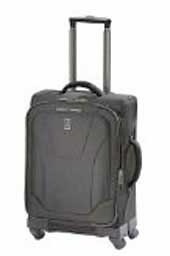 Travelpro Luggage Maxlite 2 20" Expandable Spinner
Travelpro Luggage Maxlite 2 20" Expandable Spinner
A shoulder bag for your daily walk-about.
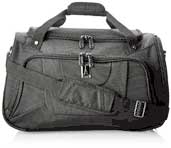 Travelpro Luggage Maxlite3 Soft Tote
Travelpro Luggage Maxlite3 Soft Tote
Keep your stuff organized.

Luggage Packing Cubes
eBags 3pc Set
The two gallon size is excellent for packing your clothes, but it is hard to find in Europe.
 Two gallon plastic bags
Two gallon plastic bagsZipLoc by SC Johnson
Inconspicuously lock your zippered luggage with a black wire tie.
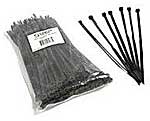 Cables to Go 43036 Cable Ties - 100 Pack (Black)
Cables to Go 43036 Cable Ties - 100 Pack (Black)
A Swiss Army Knife is unquestionably the handiest item a traveler can carry, except not on a plane.
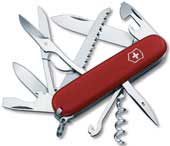 Victorinox Swiss Army Huntsman II Knife
Victorinox Swiss Army Huntsman II Knife
Note: The highlighted #E number is purely arbitrary. It is meant to help quickly identify products in this advert column when you write in for electrical advice.
See NOTE TO READERS.
Plug adapters are needed throughout Europe. There are at least five models used in different countries.
This adapter is for the standard grounded plug in France, Germany, and northern Europe. It does not fit in outlets of Italy, Switzerland, Ireland, and Britain.
#E-010
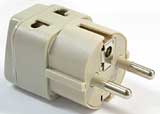 Grounded Universal 2 in 1 Plug Adapter
Grounded Universal 2 in 1 Plug Adapter
European Schuko plug.
4.8 mm prongs.
Equivalent to type E and F.
You can use this ungrounded Euro plug in some European countries.
#E-020
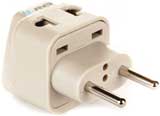 Universal 2 in 1 Plug Adapter
Universal 2 in 1 Plug Adapter
Euro Plug
4.0 mm prongs.
Equivalent to type C.
This is a universal plug adapter for the UK and Ireland.
#E-030
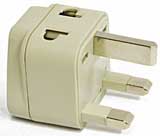 AC Adapter Plug for use in England, Scotland, Wales, and Ireland
AC Adapter Plug for use in England, Scotland, Wales, and Ireland
Equivalent to type G.
Here is the Swiss version.
#E-040
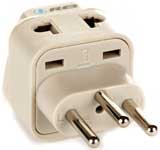 Grounded Universal 2 in 1 Plug Adapter
Grounded Universal 2 in 1 Plug Adapter
Type J for Switzerland
Here is the grounded Italian model.
#E-050
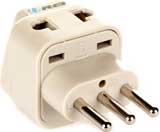 Grounded Universal 2 in 1 Plug Adapter
Grounded Universal 2 in 1 Plug Adapter
Type L for Italy
This 110-250 volt power surge strip has three universal outlets and an American grounded plug so it needs a plug adapter for the countries you are visiting. Make sure your gizmos are rated for 110-240 volts.
#E-060
 SM-60 Universal 3 Outlet Power Strip Surge Protector for Worldwide Travel. 110V-250V with Overload Protection.
SM-60 Universal 3 Outlet Power Strip Surge Protector for Worldwide Travel. 110V-250V with Overload Protection.
If your gizmos charge through a USB port this can keep you going. European cars have the same 12 volt system as American cars.
#E-200
 Scosche Dual USB
Scosche Dual USBCar Charger
The links in this pink field take you directly to a page at Amazon.com. The Amazon page details the item, and in most cases includes candid and critical comments from others who have bought the item.
Amazon pays my site a small commission when you click and order an item, if you put it in your shopping cart within 24 hours based on the cookie they set on your computer. If you don't want to make a quick decision just put it in your shopping cart, think it over, and come back later. The revenue covers the cost of maintaing this web site and keeps it free to users.
You benefit when buying here because Amazon has:
- 20% - 30% discount on many items,
- free shipping deals, direct to your door,
- no sales tax on internet purchases in most states,
- zillions of products, well almost,
- fast delivery even when it is free,
- shipment tracking in UPS, USPS, FedEx,
- easy returns if you are not happy with the product.
You win we win. Thanks for your support!!
Have a good trip in life,
John Bermont
Note: Italicized notations by the author.
This 50 watt 220/110 volt step down transformer is good for very small 110 volt appliances and light duty chargers.
#E-070
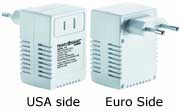 Travel Smart by Conair 50-Watt International Transformer
Travel Smart by Conair 50-Watt International Transformer
Wear a money belt under your shirt to protect your passport and valuables, especially if you are staying in hostels or dorms.
 Lewis N. Clark RFID Blocking Waist Stash
Lewis N. Clark RFID Blocking Waist Stash
An RFID blocking wallet protects your passport and credit cards from identity theft in public places.
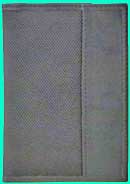 Travelon RFID Blocking Passport Case
Travelon RFID Blocking Passport Case
A Swiss Army Knife is unquestionably the handiest item a traveler can carry, except not on a plane.
 Victorinox Swiss Army Huntsman II Knife
Victorinox Swiss Army Huntsman II Knife
This will come in very handy very often.
 Fenix LD15
Fenix LD15High Performance
LED Flashlight
To help find your way on the winding and poorly posted roads of Europe. It works for civilian travelers also.
 Lensatic Military Marching Compass
Lensatic Military Marching Compass
This is my book, available at Amazon.com. The last edition was published in 2003. Critical up-dates are on this web site.
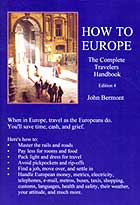 How To Europe
How To EuropeThe Complete
Travelers Handbook
by John Bermont
The best travel guide to all of Europe.
 Europe on a Shoestring
Europe on a ShoestringLonely Planet
A comprehensive guide to 3,000 hotels and restaurants in 44 major cities throughout Europe, in English. Separate books in the Michelin Red series cover individual countries in greater detail. This is a must have for frequent travelers.
 Main Cities of Europe 2015
Main Cities of Europe 2015Michelin Guide
Michelin will get you on the right road.
 Europe Map Michelin
Europe Map Michelin
This camera includes a GPS that automatically sets the internal clock depending on which time zone you are in.
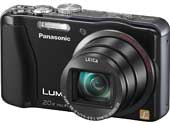 Panasonic Lumix ZS20 14.1 MP High Sensitivity MOS Digital Camera with 20x Optical Zoom
Panasonic Lumix ZS20 14.1 MP High Sensitivity MOS Digital Camera with 20x Optical Zoom
One of my favorite books. Ernest Hemingway in Paris.
 A Moveable Feast
by Ernest Hemingway
A Moveable Feast
by Ernest Hemingway
 Very soft houndstooth neck scarf, Kanye West style, different colors available
Very soft houndstooth neck scarf, Kanye West style, different colors available


